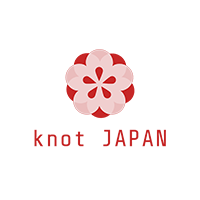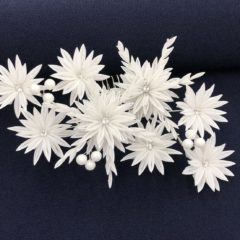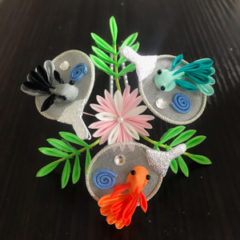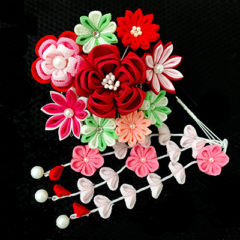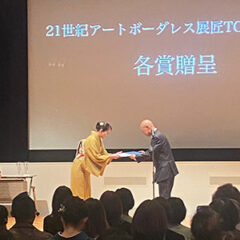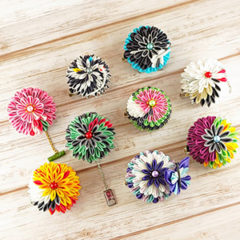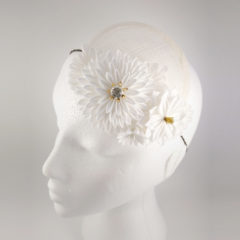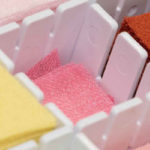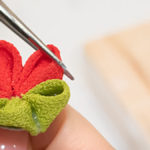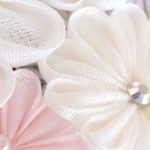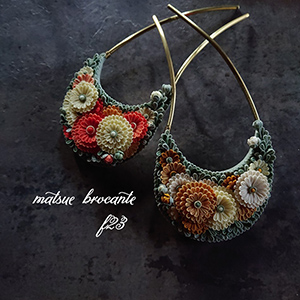
The famous Tsumami-zaiku artist will talk about their thoughts about Tsumami-zaiku.
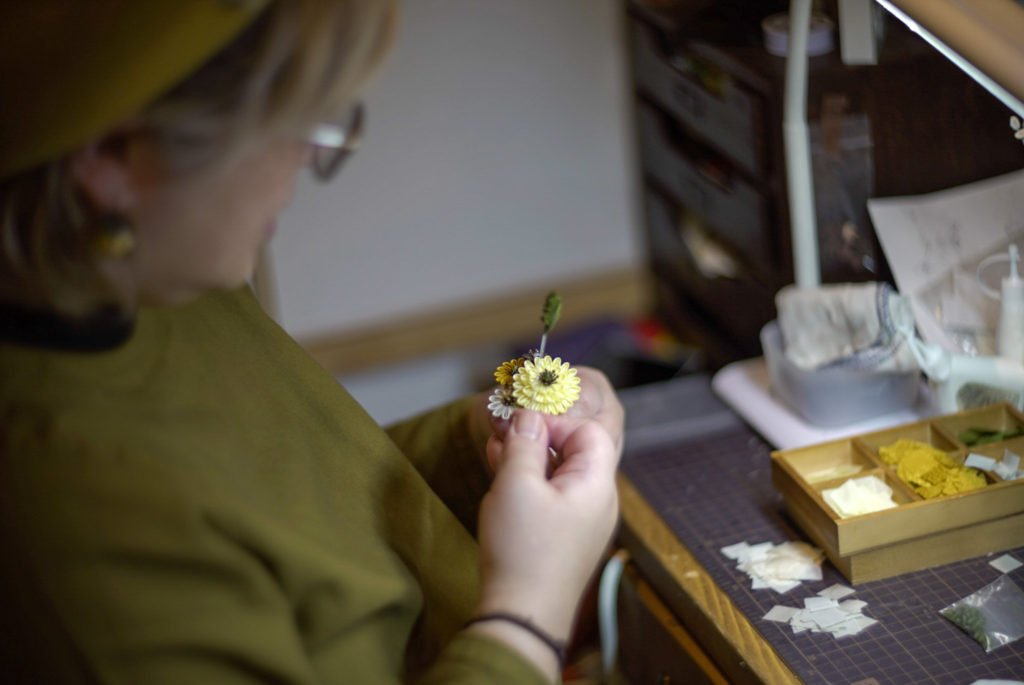
Profile:
2004- While working in the corporate standard management department of a company, started to sell products at handmade events as brocante f23.
*I use the word, ”brocante” because I love old tools. Rather than the original meaning of “old tools,” I use this word to describe our concept of creating products that can be used with respect as they age.
2014- Retired from the company and started working as f23 by running workshops, etc., and also started short classes for the coming-of-age ceremony.
2018- Opened “brocante”, a craft and cafe in Matsue City, Shimane Prefecture. Opened tsumami-zaiku store, “f23” in a corner of the shop to produce and sell products. (Workshops and classes are currently suspended due to COVID-19 but will resume as soon as the situation is settled.)
2020- Won the Bronze Prize in the Craft Division of the 53rd Shimane Prefecture General Art Exhibition.
Instagram:
https://instagram.com/cyobi8108
Twitter:
https://twitter.com/matue_brocante
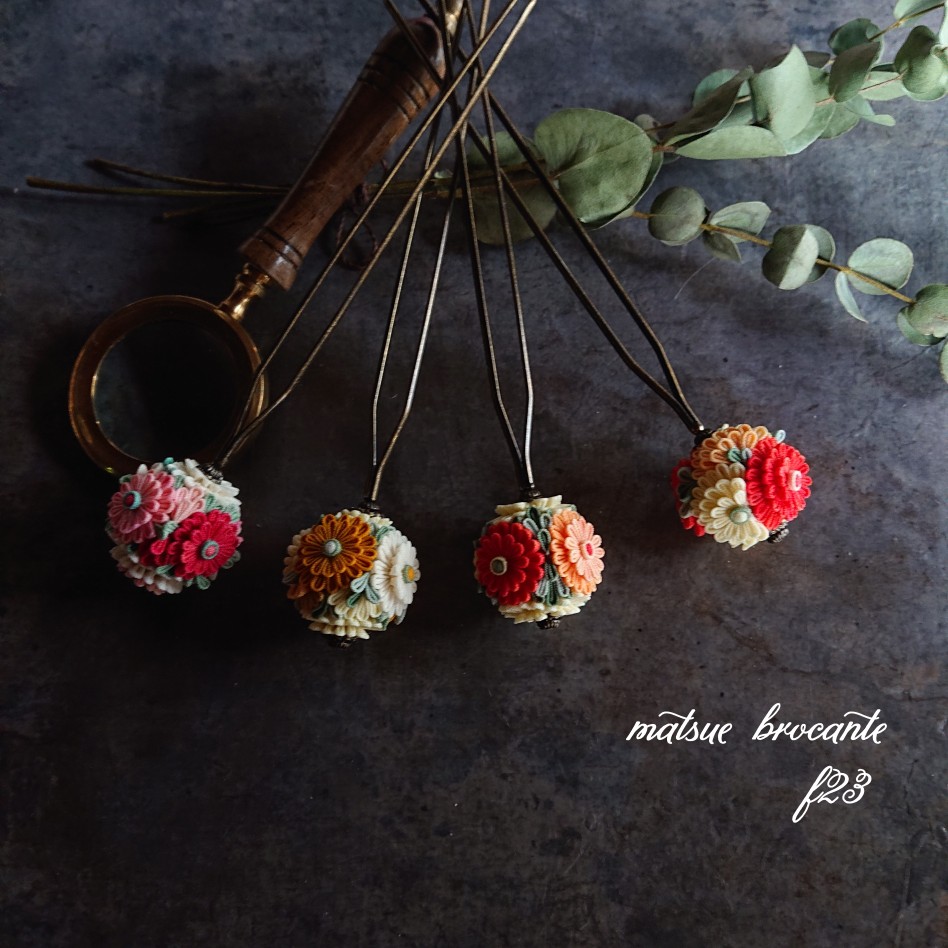
Q1. How did you start working on Tsumami-zaiku? (Or did you get involved?)
I wanted to make a tsumami kanzashi for my only daughter. This is where it all began. At that time, there were almost no handicraft books or materials available, so I disassembled and examined kanzashi I had used for the Shichi-Go-San (Seven-Five-Three year old ceremony) and tried to make them in my way.
I still have my first piece. It’s not something I can show to anyone, but it’s the first piece of tsumami-zaiku I made for my daughter, so I always keep it on my work desk at home to keep my first intentions in mind.
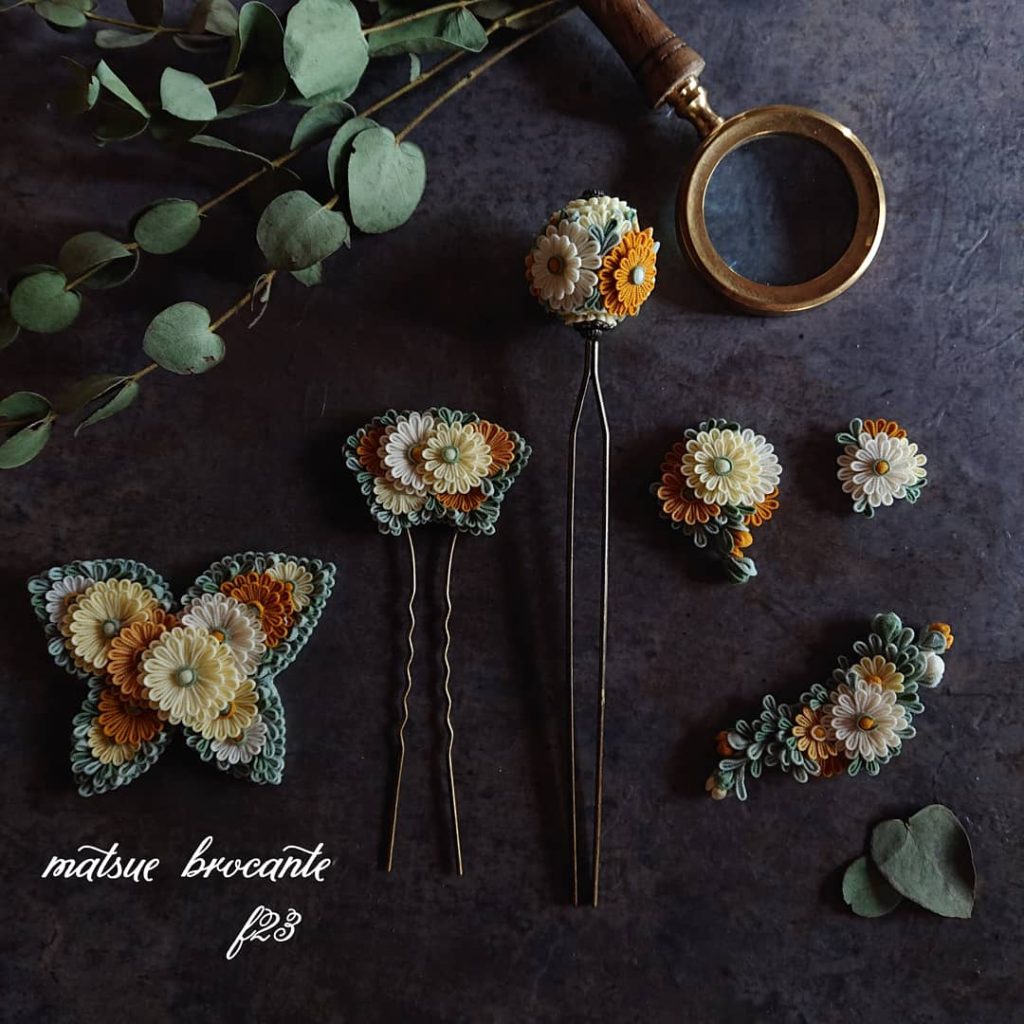
Q2. What are your commitments to your work and what do you care about?
Tsumami-zaiku is famous as a traditional craft, but only a few people are the real inheritors. I have a strong admiration for traditional handicraft and composition, but I have come to believe that it is inappropriate for me, as a non-traditionalist, to simply treat or call myself traditional. The basic technique is the same, and while I respect and admire it, I am always looking for creative and dramatic ways to create tsumami-zaiku using non-traditional expressions and materials.
Moreover, the basic premise of the craft is to be used. I am constantly seeking to create beautiful, durable, usable, and highly precise tsumami zaiku..
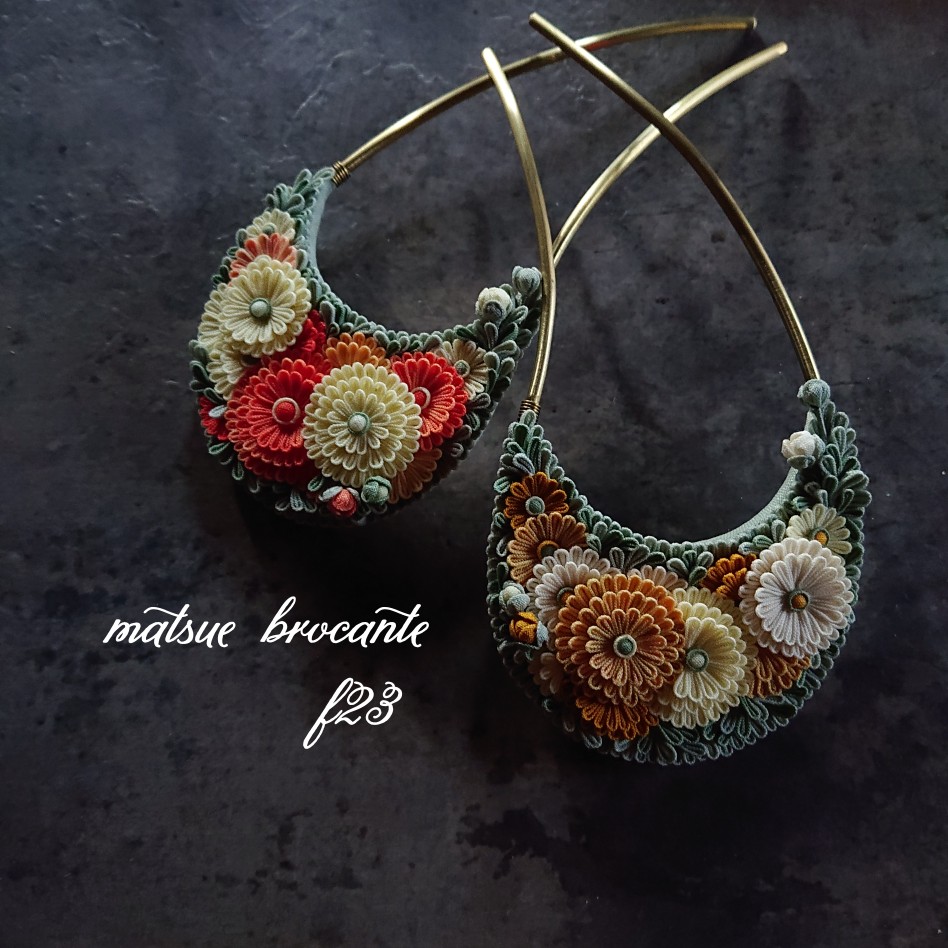
Q3. What is the attractiveness of Tsumami-zaiku for you?
A single piece of tsumami zaiku is really simple, but by forming and assembling it in various ways, you can create endless expressions. This is an art that can be fit in your hand. Dyeing, materials, techniques. I am fascinated by everything and will continue to be fascinated.

Q4. What do you think about the future possibilities of Tsumami-zaiku?
I think it’s no exaggeration to say that if you are allowed to use fabric or similar materials, you have all the possibilities. It can be big or small, dynamic or static, gorgeous or simple. I think it can be used in all kinds of situations of expression. And if people with different environments and thoughts can make it in various ways, there will be as many expressions of tsumami zaiku as the number of authors, so I think the possibilities are infinite.
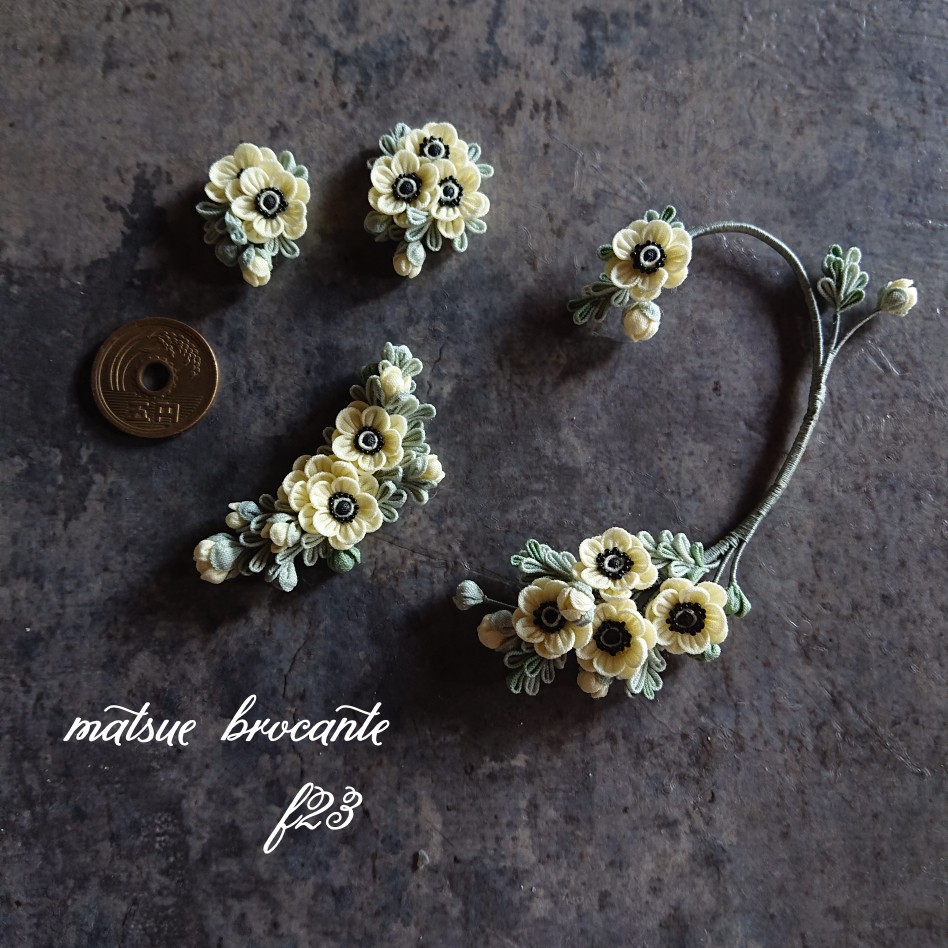
Q5. What do you want to make in the future?
There are many things I would like to try. For example, beautifully embellishing the décolletage or hem of a dress can be very fascinating and challenging. A wedding dress, an evening dress, a party dress, etc. can be decorated with tsumami zaiku to create an exotic or antique look. However, there is a big challenge. Laundering. Will it be possible to make a tsumami zaiku that can endure this? It may be possible to clean it because it is made of cloth, but of course, the shape will be damaged and it will be impossible to maintain the beauty of tsumami zaiku. However, I would like to always keep this in mind so that one day the problem will resolve.
Besides that, I would like to achieve a higher level of fine-quality work and expression for making hair ornaments and other familiar ornaments. I will keep on going to skill up my techniques hoping that one day, when it becomes possible to make tsumami-zaiku that can be cleaned.
